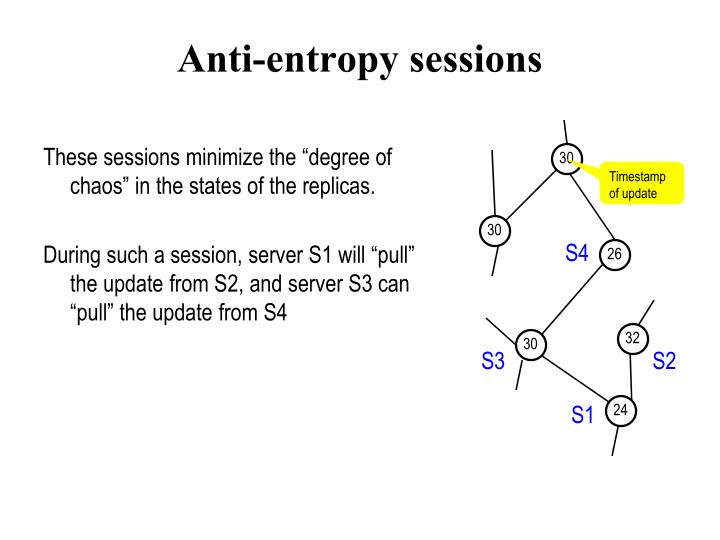
In this blog series, we’re going to explore eventual consistency, a term that can be hard to define without having all the right vocabulary. ^ Leon Brillouin, The negentropy principle of information, J.InfluxDB, Community, Developer, InfluxDB Enterprise.de Hemptinne, Non-equilibrium Thermodynamics approach to Transport Processes in Gas Mixtures, Department of Chemistry, Catholic University of Leuven, Celestijnenlaan 200 F, B-3001 Heverlee, Belgium Scheilman, Temperature, Stability, and the Hydrophobic Interaction, Biophysical Journal 73 (December 1997), 2960–2964, Institute of Molecular Biology, University of Oregon, Eugene, Oregon 97403 USA ^ Antoni Planes, Eduard Vives, Entropic Formulation of Statistical Mechanics, Entropic variables and Massieu–Planck functions Universitat de Barcelona.Addition au precedent memoire sur les fonctions caractéristiques. Sur les fonctions caractéristiques des divers fluides. ^ Willard Gibbs, A Method of Geometrical Representation of the Thermodynamic Properties of Substances by Means of Surfaces, Transactions of the Connecticut Academy, 382–404 (1873).Leibovici and Christian Beckmann, An introduction to Multiway Methods for Multi-Subject fMRI experiment, FMRIB Technical Report 2001, Oxford Centre for Functional Magnetic Resonance Imaging of the Brain (FMRIB), Department of Clinical Neurology, University of Oxford, John Radcliffe Hospital, Headley Way, Headington, Oxford, UK. Comon, Independent Component Analysis – a new concept?, Signal Processing, 36 287–314, 1994. ^ Ruye Wang, Independent Component Analysis, node4: Measures of Non-Gaussianity.^ Aapo Hyvärinen and Erkki Oja, Independent Component Analysis: A Tutorial, node14: Negentropy, Helsinki University of Technology Laboratory of Computer and Information Science.^ Aapo Hyvärinen, Survey on Independent Component Analysis, node32: Negentropy, Helsinki University of Technology Laboratory of Computer and Information Science.^ Léon Brillouin, La science et la théorie de l'information, Masson, 1959.^ Brillouin, Leon: (1953) "Negentropy Principle of Information", J.^ Schrödinger, Erwin, What is Life – the Physical Aspect of the Living Cell, Cambridge University Press, 1944.Entropy in thermodynamics and information theory.In his book, he further explored this problem concluding that any cause of this bit value change (measurement, decision about a yes/no question, erasure, display, etc.) will require the same amount of energy.

This is the same energy as the work Leó Szilárd's engine produces in the idealistic case. J ( p x ) = S ( φ x ) − S ( p x ) energy. Thus, negentropy is always nonnegative, is invariant by any linear invertible change of coordinates, and vanishes if and only if the signal is Gaussian.

Negentropy measures the difference in entropy between a given distribution and the Gaussian distribution with the same mean and variance. Out of all distributions with a given mean and variance, the normal or Gaussian distribution is the one with the highest entropy. In information theory and statistics, negentropy is used as a measure of distance to normality.
#ANTI ENTROPY FREE#

In 1974, Albert Szent-Györgyi proposed replacing the term negentropy with syntropy. The concept and phrase " negative entropy" was introduced by Erwin Schrödinger in his 1944 popular-science book What is Life? Later, Léon Brillouin shortened the phrase to negentropy.


 0 kommentar(er)
0 kommentar(er)
